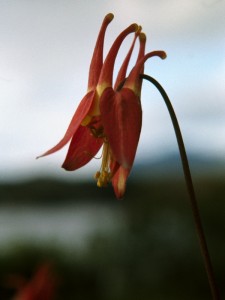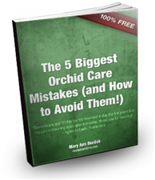 For orchid lovers, orchid propagation is a vitally important matter. Simply put, one of the reasons that orchids are so popular is because of their “fussiness”.
For orchid lovers, orchid propagation is a vitally important matter. Simply put, one of the reasons that orchids are so popular is because of their “fussiness”.
While some people might complain about a plant as demanding as the orchid, their delicate nature is often what endears fans of the plant to it. That said, no one really wants to wait for years as their orchid approaches its first bloom!
The good news is that there is a way to propagate orchids more quickly. In fact you can produce large quantities of nearly bloom-ready plants in just a short amount of time.
By far the most popular method of orchid propagation is called “division”.
What this means is simply cutting your plant in half. Instead of one healthy plant, you have two slightly smaller healthy plants. Some orchid growers may have a heart attack when they think about cutting their beloved orchids in half, but this is really nothing unusual in the world of plants.
For example, people take cuttings of cacti (and many others) all the time to propagate new plants. The principle with orchid propagation is exactly the same.
As for how to divide your plant, there’s no real trick to it! Plants, like most forms of life, tend to have an element of symmetry to them, which means that they tend to grow evenly on both sides. If you gently push apart the stems of your orchid, you’ll see that at the base of the plant, just above the soil, there’s already a natural division going on.
Most plants can just be sheared apart easily at this junction, with the result that both new plants would still have healthy and full root structures, and plenty of shoots from which to flower.
Once you’ve done this…congratulations, you’ve turned one orchid into two!
When extrapolated to a larger scale, you can see just how effective this method of orchid propagation can be (and why it’s so popular with growers).
Now there are also two slight variations on division that are worth taking a look at…
Keiki: As if there weren’t enough reasons already to love the phalaenopsis orchid, here is yet another. These plants sometimes grow what are known as “keiki”, small plants that begin to sprout out from the flower spike.
These keiki plants are nearly always removed because they can be a drain on the main orchid’s nutritional resources. But there’s nothing stopping you from potting and growing a keiki into a full-size plant in its own right.
Back Bulb Division: Many plants grow what are known as “back bulbs” or “pseudobulbs”, bulbs which may not ever flower, and which are largely leafless. Some growers value these for their ability to store water for the main plant. However in a plant that’s already healthy and mature, you can easily remove these and repot them. Under the right conditions, they’ll grow roots and soon form into complete plants.
Truth be told, part of the joy of growing orchids is taking advantage of the ways in which they seem to offer themselves up to abundant propagation. Take advantage by following these tips for successful orchid propagation, and you’re sure to be pleased with the results.
And to learn even more orchid propagation tips, download my totally FREE 5-Day Orchid Insider training course by going here: Free Orchid Care Course.




I’ll give it a try. Sounds easy. Thank you for advice
Hi, I love all your “orchids magic”!!! In your book, are all the pics and illustrations in color? Thank you.
Thank you so much! 🙂 The main resource has pictures in black and white, but our lessons in our insider club have color pictures.
I am just starting to grow some orchids and frankly speaking I don’t know much. That is the reason why I searched some tips and guidelines online. I am happy I saw your site. Thanks for sharing your knowledge.
You’re very welcome. I wish you the best with your soon to be addiction to orchids!
I want to try dividing the orchids in to two first. I will see if I can do it on my own. Your article is really helping me appreciate orchids more.
That’s great, June! 🙂 Thank you so much. I wish you the best! Let us know how it went. – Mary Ann
I would love to download the Orchid Insider training course. I want to make sure that when I start growing orchids, I really know what I am doing. I can’t wait to learn more.
Thanks, Steph. 🙂 I hope you are able to have success with your orchids! – Mary Ann
Thanks for trhe Tips on Orchids My4 plants have in bloom the past 3 months and are now gone putting them to bed for the winter le rest till spring
You’re very welcome, Len. Thus is the cycle of things. 🙂 We will look forward to spring! – Mary Ann
I left a Keiki alone & it actually put out a flower!!
Awesome! 🙂 That’s a sturdy plant you have there! – Mary Ann
Thanks, I needed this article in the worst way.
Mary Ann. I would be to scared now, but I’m
really interested. Nobody wanted the first one I got, friend was throwing it in the garbage so took it. It has bloomed twice and
now have seven HAPPY orchids..Can’t believe I’m talking to plant’s. Gloria
That’s great! 🙂 Keep it up because it’s working. – Mary Ann